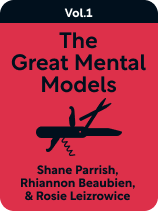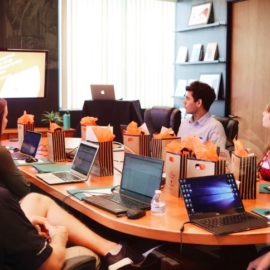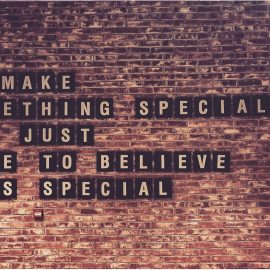

This article is an excerpt from the Shortform book guide to "The Great Mental Models Volume 1" by Shane Parrish and Rhiannon Beaubien. Shortform has the world's best summaries and analyses of books you should be reading.
Like this article? Sign up for a free trial here.
What are thought experiments? How can you use them to make better decisions?
It can be fun to imagine what’s possible. You can actually harness this imagining to assist in decision-making and problem-solving. In The Great Mental Models Volume 1, Shane Parrish and Rhiannon Beaubien discuss the mental model of possibility thinking.
Continue reading to learn how to turn your imagination into productive thought experiments.
Consider the Possibilities
Considering the chances (probabilistic thinking) narrows what choices are worth pursuing, but some problems call for an inactive way of exploring what could happen. The authors say that, for problems that you can’t test directly, thought experiments allow you to consider all of the possibilities. This is the great mental model of possibility thinking.
A thought experiment is an imagined scenario or hypothetical situation that you test with your mind’s eye. In other words, you use imagination to rigorously explore what’s possible. This allows you to test things that would pose a problem in the real world, such as ethical questions involving significant harm or things that aren’t even possible to test.
For instance, you might ask yourself, “What would I do if I were given a button that would destroy half of all life on Earth, but would also permanently end suffering?” By exploring possible answers to this question, you could reach insights about ethics, morality, and how to handle difficult decisions.
To run a thought experiment, the authors suggest that you start by formulating the question you want to explore and performing basic research to establish what’s already known. Then, formulate a hypothesis to “test” and run the thought experiment. Finally, reflect on what you found and whether to revise, change, or confirm your hypothesis.
| The Trolley Dilemma While the above example riffs on the Marvel Cinematic Universe’s use of the supervillain Thanos as a sort of thought experiment, real-world thought experiments have led to major scientific and philosophical advances. Thinkers as far back as ancient Greece appeared to use thought experiments in debate, and they continue to be used in various capacities today. One famous thought experiment is “The Trolley Dilemma.” Originally developed in 1967 by philosopher Philippa Foot, it goes like this: Imagine you see a runaway trolley barrelling toward five unsuspecting workers. There is no time to warn the workers, no way to stop the trolley, and the collision will surely result in their deaths. You do, however, have a lever next to you that will switch the trolley onto another track—on which there is one unsuspecting worker. What do you do? Do you stand by and allow fate to kill five innocent people? Or do you step in and become the direct cause of one person’s death? This experiment exemplifies the principles the authors discuss: We can use our imaginations to conceive of a scenario that would be dangerous or difficult to test as a way to engage in meaningful (and risk-free) decision making; in this case, concerning morality and ethics. |

———End of Preview———
Like what you just read? Read the rest of the world's best book summary and analysis of Shane Parrish and Rhiannon Beaubien's "The Great Mental Models Volume 1" at Shortform.
Here's what you'll find in our full The Great Mental Models Volume 1 summary:
- What mental models are and how they work
- How to make better decisions by using mental models
- How to use your imagination to evaluate your choices






